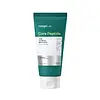What's inside
What's inside
 Key Ingredients
Key Ingredients

 Benefits
Benefits

 Concerns
Concerns

 Ingredients Side-by-side
Ingredients Side-by-side

Water
Skin ConditioningBehentrimonium Methosulfate
Cetearyl Alcohol
EmollientGlycerin
HumectantStearalkonium Chloride
PreservativeAloe Barbadensis Leaf Juice
Skin ConditioningCaprylic/Capric Triglyceride
MaskingButyrospermum Parkii Butter
Skin ConditioningSodium Benzoate
MaskingOryza Sativa Bran Oil
EmollientPersea Gratissima Oil
Skin ConditioningCocos Nucifera Oil
MaskingHydrolyzed Quinoa
Skin ConditioningHydrolyzed Rice Protein
Skin ConditioningCamellia Sinensis Leaf Extract
AntimicrobialWater, Behentrimonium Methosulfate, Cetearyl Alcohol, Glycerin, Stearalkonium Chloride, Aloe Barbadensis Leaf Juice, Caprylic/Capric Triglyceride, Butyrospermum Parkii Butter, Sodium Benzoate, Oryza Sativa Bran Oil, Persea Gratissima Oil, Cocos Nucifera Oil, Hydrolyzed Quinoa, Hydrolyzed Rice Protein, Camellia Sinensis Leaf Extract
Water
Skin ConditioningSorbitol
HumectantCetearyl Alcohol
EmollientIsopentyldiol
HumectantPropylene Glycol
HumectantCaprylic/Capric Triglyceride
MaskingCetyl Alcohol
EmollientDimethicone
EmollientBehentrimonium Chloride
PreservativeCetyl Ethylhexanoate
EmollientSteartrimonium Chloride
PreservativeDimethiconol
EmollientBehenyl Alcohol
EmollientParfum
MaskingHydroxyacetophenone
AntioxidantCaprylyl Glycol
EmollientPanthenol
Skin ConditioningSalicylic Acid
MaskingEthylhexylglycerin
Skin ConditioningNiacinamide
SmoothingXanthan Gum
EmulsifyingPolyquaternium-22
Disodium EDTA
Hydroxyethylcellulose
Emulsion StabilisingButylene Glycol
HumectantArginine
Masking1,2-Hexanediol
Skin ConditioningHydrogenated Lecithin
EmulsifyingIsomalt
HumectantMaltodextrin
AbsorbentCoptis Japonica Root Extract
Skin ConditioningSodium Hyaluronate
HumectantGlycerin
HumectantCaesalpinia Spinosa Fruit Extract
Skin ProtectingPisum Sativum Sprout Extract
Skin ConditioningHelianthus Annuus Sprout Extract
Skin ConditioningAvena Sativa Protein Extract
Skin ConditioningCeramide NP
Skin ConditioningOryza Sativa Seed Protein
AntioxidantPisum Sativum Peptide
Skin ConditioningPrunus Amygdalus Dulcis Protein
Skin ConditioningAsiatic Acid
Skin ConditioningAsiaticoside
AntioxidantCentella Asiatica Extract
CleansingCysteine
AntioxidantGlycine
BufferingGlycoproteins
Skin ConditioningHydrolyzed Keratin
HumectantHydrolyzed Oat Protein
Skin ConditioningHydrolyzed Rice Protein
Skin ConditioningHydrolyzed Soy Protein
HumectantLysine
Skin ConditioningMadecassic Acid
Skin ConditioningMadecassoside
AntioxidantSerine
MaskingCopper Tripeptide-1
Skin ConditioningSh-Oligopeptide-2
Skin ConditioningSh-Polypeptide-1
Skin ConditioningSh-Polypeptide-9
Skin ConditioningWater, Sorbitol, Cetearyl Alcohol, Isopentyldiol, Propylene Glycol, Caprylic/Capric Triglyceride, Cetyl Alcohol, Dimethicone, Behentrimonium Chloride, Cetyl Ethylhexanoate, Steartrimonium Chloride, Dimethiconol, Behenyl Alcohol, Parfum, Hydroxyacetophenone, Caprylyl Glycol, Panthenol, Salicylic Acid, Ethylhexylglycerin, Niacinamide, Xanthan Gum, Polyquaternium-22, Disodium EDTA, Hydroxyethylcellulose, Butylene Glycol, Arginine, 1,2-Hexanediol, Hydrogenated Lecithin, Isomalt, Maltodextrin, Coptis Japonica Root Extract, Sodium Hyaluronate, Glycerin, Caesalpinia Spinosa Fruit Extract, Pisum Sativum Sprout Extract, Helianthus Annuus Sprout Extract, Avena Sativa Protein Extract, Ceramide NP, Oryza Sativa Seed Protein, Pisum Sativum Peptide, Prunus Amygdalus Dulcis Protein, Asiatic Acid, Asiaticoside, Centella Asiatica Extract, Cysteine, Glycine, Glycoproteins, Hydrolyzed Keratin, Hydrolyzed Oat Protein, Hydrolyzed Rice Protein, Hydrolyzed Soy Protein, Lysine, Madecassic Acid, Madecassoside, Serine, Copper Tripeptide-1, Sh-Oligopeptide-2, Sh-Polypeptide-1, Sh-Polypeptide-9
Ingredients Explained
These ingredients are found in both products.
Ingredients higher up in an ingredient list are typically present in a larger amount.
This ingredient is an emollient, solvent, and texture enhancer. It is considered a skin-softener by helping the skin prevent moisture loss.
It helps thicken a product's formula and makes it easier to spread by dissolving clumping compounds.
Caprylic Triglyceride is made by combining glycerin with coconut oil, forming a clear liquid.
While there is an assumption Caprylic Triglyceride can clog pores due to it being derived from coconut oil, there is no research supporting this.
Learn more about Caprylic/Capric TriglycerideCetearyl alcohol is a mixture of two fatty alcohols: cetyl alcohol and stearyl alcohol. It is mainly used as an emulsifier. Emulsifiers help prevent the separation of oils and products. Due to its composition, it can also be used to thicken a product or help create foam.
Cetearyl alcohol is an emollient. Emollients help soothe and hydrate the skin by trapping moisture.
Studies show Cetearyl alcohol is non-toxic and non-irritating. The FDA allows products labeled "alcohol-free" to have fatty alcohols.
This ingredient is usually derived from plant oils such as palm, vegetable, or coconut oils. There is debate on whether this ingredient will cause acne.
Due to the fatty acid base, this ingredient may not be Malassezia folliculitis safe.
Learn more about Cetearyl AlcoholGlycerin is already naturally found in your skin. It helps moisturize and protect your skin.
A study from 2016 found glycerin to be more effective as a humectant than AHAs and hyaluronic acid.
As a humectant, it helps the skin stay hydrated by pulling moisture to your skin. The low molecular weight of glycerin allows it to pull moisture into the deeper layers of your skin.
Hydrated skin improves your skin barrier; Your skin barrier helps protect against irritants and bacteria.
Glycerin has also been found to have antimicrobial and antiviral properties. Due to these properties, glycerin is often used in wound and burn treatments.
In cosmetics, glycerin is usually derived from plants such as soybean or palm. However, it can also be sourced from animals, such as tallow or animal fat.
This ingredient is organic, colorless, odorless, and non-toxic.
Glycerin is the name for this ingredient in American English. British English uses Glycerol/Glycerine.
Learn more about GlycerinHydrolyzed Rice Protein is protein extracted from rice. This ingredient is rich in antioxidants and peptides.
Studies show this ingredient may help with blocking the melanin creation process when skin is exposed to UV.
Water. It's the most common cosmetic ingredient of all. You'll usually see it at the top of ingredient lists, meaning that it makes up the largest part of the product.
So why is it so popular? Water most often acts as a solvent - this means that it helps dissolve other ingredients into the formulation.
You'll also recognize water as that liquid we all need to stay alive. If you see this, drink a glass of water. Stay hydrated!
Learn more about Water